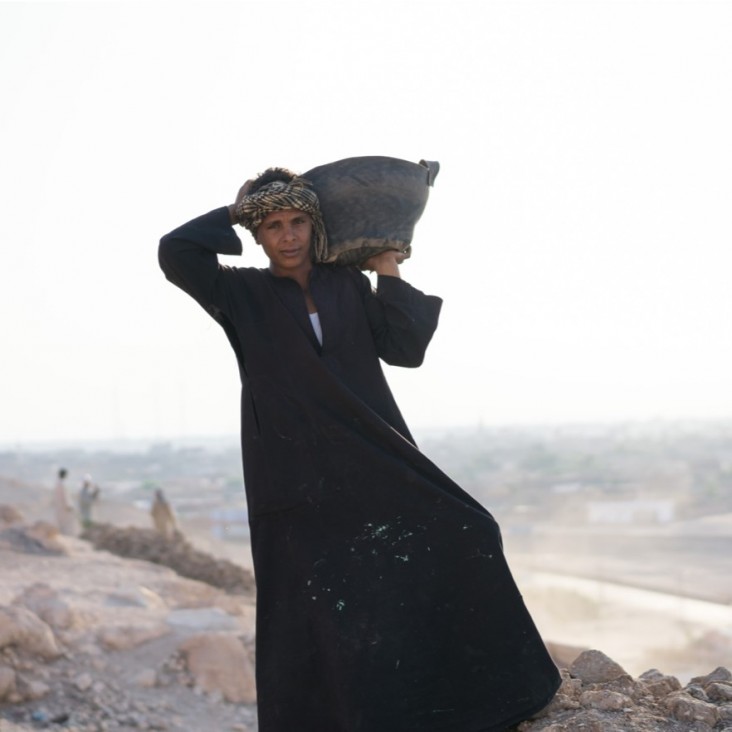
Overview
Egypt’s antiquities are not only part of its cultural heritage, but also represent an important economic asset that creates jobs and income.
The U.S. government through the U.S. Agency for International Development (USAID) has provided assistance valued at over $100 million since 1995 to conserve monuments and masterpieces spanning the full range of Egypt's long cultural heritage – from Pharaonic times to the late Ottoman period.
Tourism has historically accounted for about 13 percent of the Egyptian economy and a corresponding amount of employment. The positive impact of tourism can be increased through enhancing linkages with other local economic employment opportunities for people in communities near antiquities sites. Local economies can benefit from tourism demand for local goods and services and the development of more opportunities for local businesses. After the 2011 political transition, the number of tourists visiting Egypt dropped, and the sector’s slow recovery has created considerable strain on an already struggling economy. USAID-financed restoration and training programs help to ensure that, as the tourism industry recovers, Egypt can capitalize on the sector’s traditional role as an engine of economic growth and employment.
Many of Egypt’s cultural treasures need to be restored and protected, not only from human activity but also from environmental factors such as rising groundwater, which threatens many important sites as well as the homes and health of citizens living around them. Rising groundwater levels are caused by a number of factors, including the rise of the Nile due to the Aswan Dam, leaking sewage and water pipes, runoff, and irrigation. Groundwater rises through the foundations of structures, which weakens these ancient foundations. This groundwater can contain salts dissolved from soil as the water table rises, and these salts promote further destruction of the foundations.
Since 2000, USAID in collaboration with the Government of Egypt has completed six large-scale engineering projects to protect several of the country’s most important archaeological sites from rising groundwater including Karnak Temple; Luxor Temple; the major temple sites of Medinat Habu, Amenhotep, the Ramesseum, and Seti I on Luxor’s West Bank; Edfu Temple; the Sphinx and Giza Plateau; and Coptic Cairo and the Bab Zuweila Gate of Fatimid Cairo.
Current Activities
Cultural Heritage and Tourism in Egypt: Current USAID-funded conservation and preservation activities provide training and employment opportunities for semi-skilled workers from local populations, generating economic benefits for those living in and around the project sites. Additionally, the projects improve the capacity and technical skills of archaeologists to ensure future sustainability, emphasize heritage awareness and education as critical elements of heritage management, and work hand in hand with Egypt’s Ministry of Antiquities to better protect and manage these historic sites for future generations. Current activities focus on significant monuments and tourist destinations representing key elements of Egypt's cultural heritage, including Pharaonic civilization in Esna, Luxor, and Memphis and Christianity in the Nile Valley in Sohag. Implementing Partners: American Research Center in Egypt, Chicago House, Ancient Egyptian Research Associates, and Takween Integrated Community Development; Life of Project: January 2015-September 2018; Total Estimated Cost: $12.6 million; Bilateral Agreement: Sustainable Investment Tourism in Egypt (SITE).
LIFE Red Sea: USAID works with local partners to promote sustainable tourism development and improved management of natural resources on Egypt’s Red Sea coast. The project improves the livelihoods of low-income Egyptians through income-generating activities that showcase the region’s cultural and natural heritage. Implementing Partner: Hurghada Environmental Protection and Conservation Association; Life of Project: April 2016-September 2017; Total Estimated Cost: $1.4 million; Bilateral Agreement: Livelihoods and Income from the Environment (LIFE).
Groundwater Lowering Projects: Saline groundwater is weakening the foundations of ancient monuments and eroding hieroglyphics and other wall carvings. To help alleviate the problem, USAID supports activities to design and construct groundwater lowering systems at the Kom Ombo temple near Aswan and the Catacombs of Alexandria. USAID’s engineering partners identify the sources and quantity of groundwater flowing towards the sites and then design and construct systems that will protect the antiquities from the groundwater. USAID also brings in archaeological experts to work in partnership with Egypt’s Ministry of Antiquities to be sure any archaeological information or objects discovered during system design and construction is preserved for posterity. Implementing Partners: American Research Center in Egypt, Camp Dresser & McKee/Smith, and the Government of Egypt represented by the National Organization for Potable Water and Sanitary Drainage; Life of Project: December 2011-January 2017; Total Estimated Cost: $21 million; Bilateral Agreement: Sustainable Investment Tourism in Egypt (SITE).








Comment
Make a general inquiry or suggest an improvement.